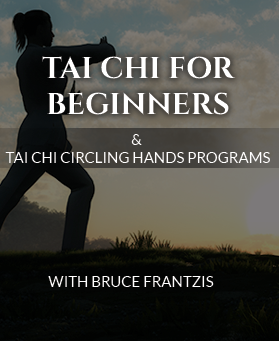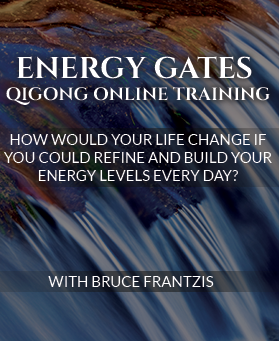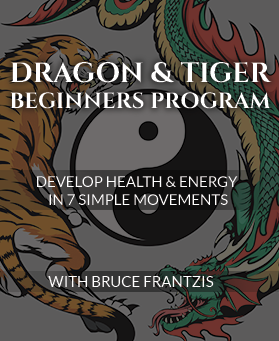A classic Taoist technique is to gaze at something, be it a river, stream, fire, or any of the elements (or even watching a branch grow) and rather than just see the object, penetrate into it and see the emptiness within. This technique is by no means exclusive to Taoism (for instance the Hindus refer to it as Samādhi). In this sense of emptiness, the name of the object drops away, as does its form, appearance, and even the meaning one attached to it. The core essence within the emptiness is something that is in a continual state of flux (and differing from one split second to the next). This can be analogized to the quote that “one can never step in the same stream twice.”
In the story, as Chuang Tse walks above the bridge, it can be viewed as Chuang Tse choosing to apply the technique of emptiness to seeing that within the river. In this state of emptiness, the essence of everything attached to the river becomes clear, including the fish and all the potentialities of what everything could become. Thus, amongst other things, Chuang Tse is able to understand “what fish like.” Let’s revisit the original version of the passage to read it in a different light:
Chuang Tse and Hui Tse are wandering across a bridge on the river Hao.
Chuang Tse: The tiao fish come out roaming, free and at ease. This is the joy of fish.
Hui Tse: You are not a fish, how you can know what fish like?
Chuang Tse: You are not me, how you can you know what I know?
Hui Tse: I am not you and I do not know what you think, but I know you are a not fish and therefore you cannot possibly know what fish think.
Chuang Tse: Let’s go back to the beginning. When you asked me what fish like, you had to know I knew it already to begin with. I know it by the river Hao, that’s how.
In his writings, Chuang Tse puts a strong emphasis on emptiness. Stanford University, for example, lists this as one of the prime aspects of his philosophy, that, through seeing the flux within Hui Tse (his possible choices of speech), Chuang Tse was able to masterfully plan out an entire conversation which turned the logic Hui Tse prided himself upon against him. At the same time, a story is created which captivates the mind and can be read on many different levels.
On one hand, you could assume a fairly general statement such as “fish like that which is natural,” is true and can be used to accept the entire reasoning process. Likewise, from reading biblical stories of the Devil, one could just assume Lucifer cannot be trusted to make a deal with, just because Lucifer is “evil.” However, both these simple explanations don’t get to the real substance or depth of the matter.
This interpretation assumes Chuang Tse was just messing with Hui Tse, and using a belief to justify his viewpoint (not unlike a Christian trying to criticize an activity, simply because it goes against the bible). Alternatively, a much more complete explanation of what Chuang Tse says can be found by applying the concept of emptiness to what he looked for in the fish. This reading makes more sense, and given the degree of meaning he incorporates into the rest of his work, I cannot fathom Chuang Tse choosing to write this passage if it’s about nothing more than following what is natural. The mind state of emptiness is a profound concept, and Chuang Tse makes many attempts to demonstrate it rather than simply focusing on more mundane concepts.
However, with ideas that were so different from mainstream thought, if they were openly stated as a truth, I would expect them to be ignored, ridiculed, or at best not understood. By indirectly alluding to knowing through emptiness (in many ways the antithesis of most human knowledge), Chuang Tse avoids these pitfalls, and allows those who have the ability to perceive a different paradigm.





0 Comments